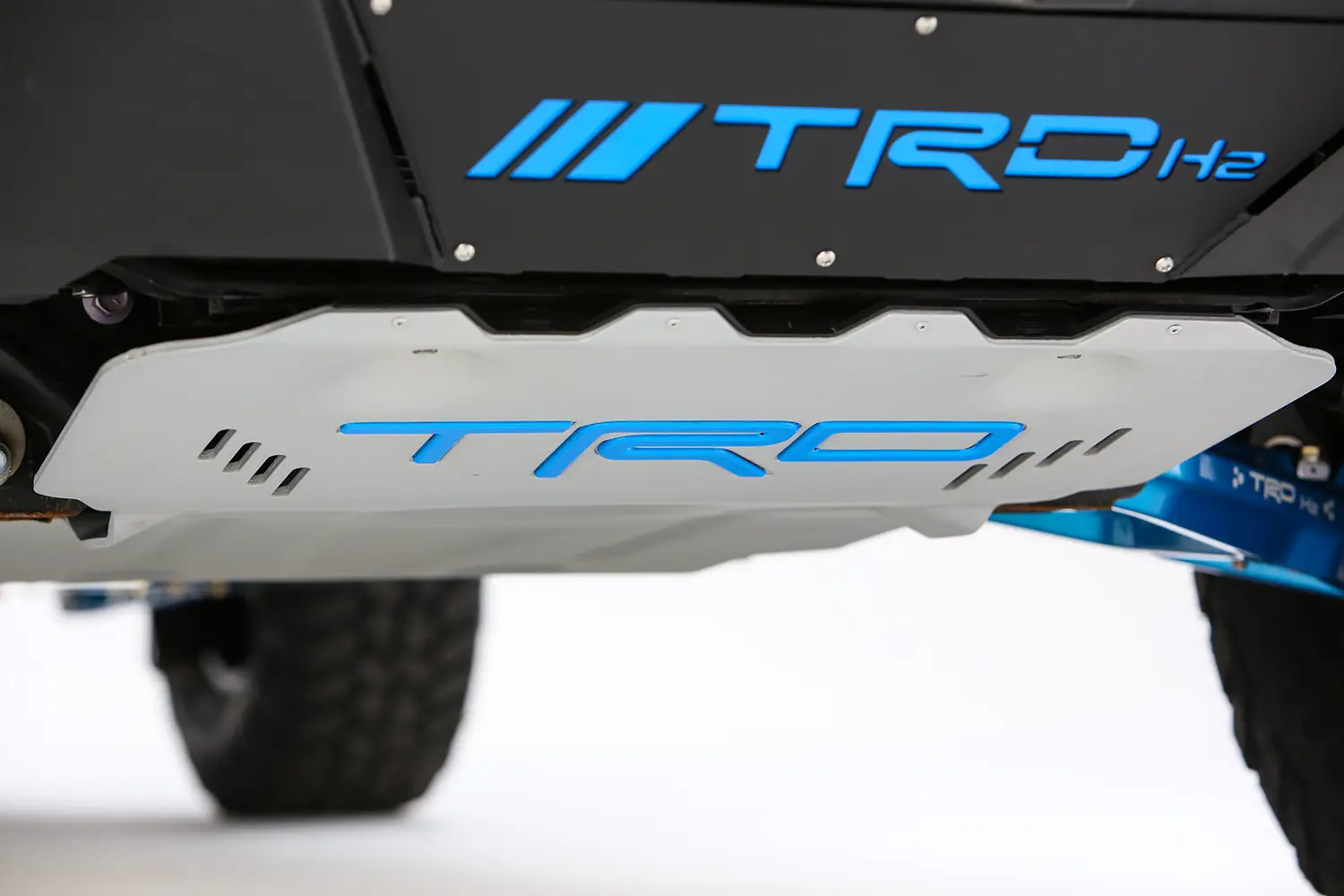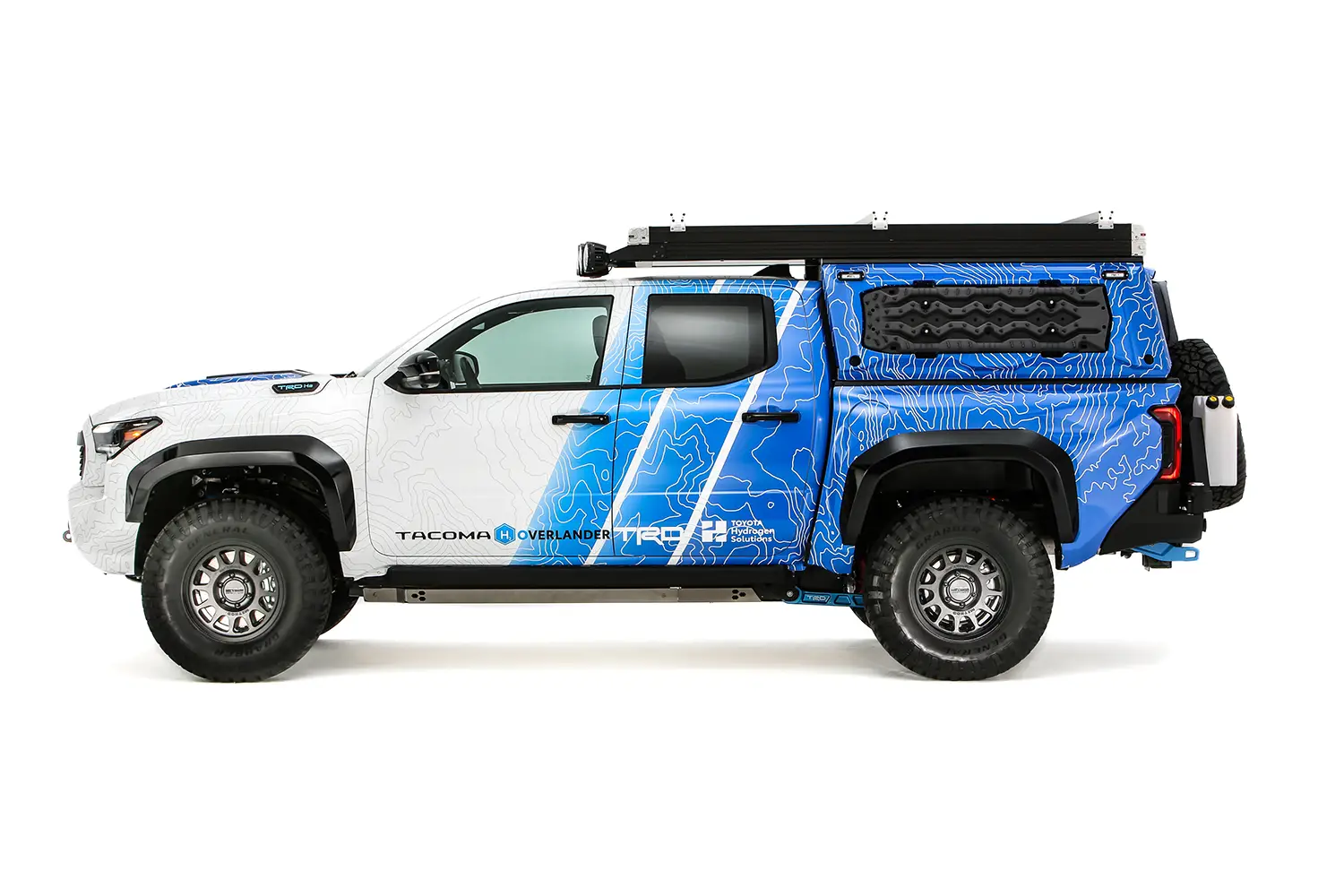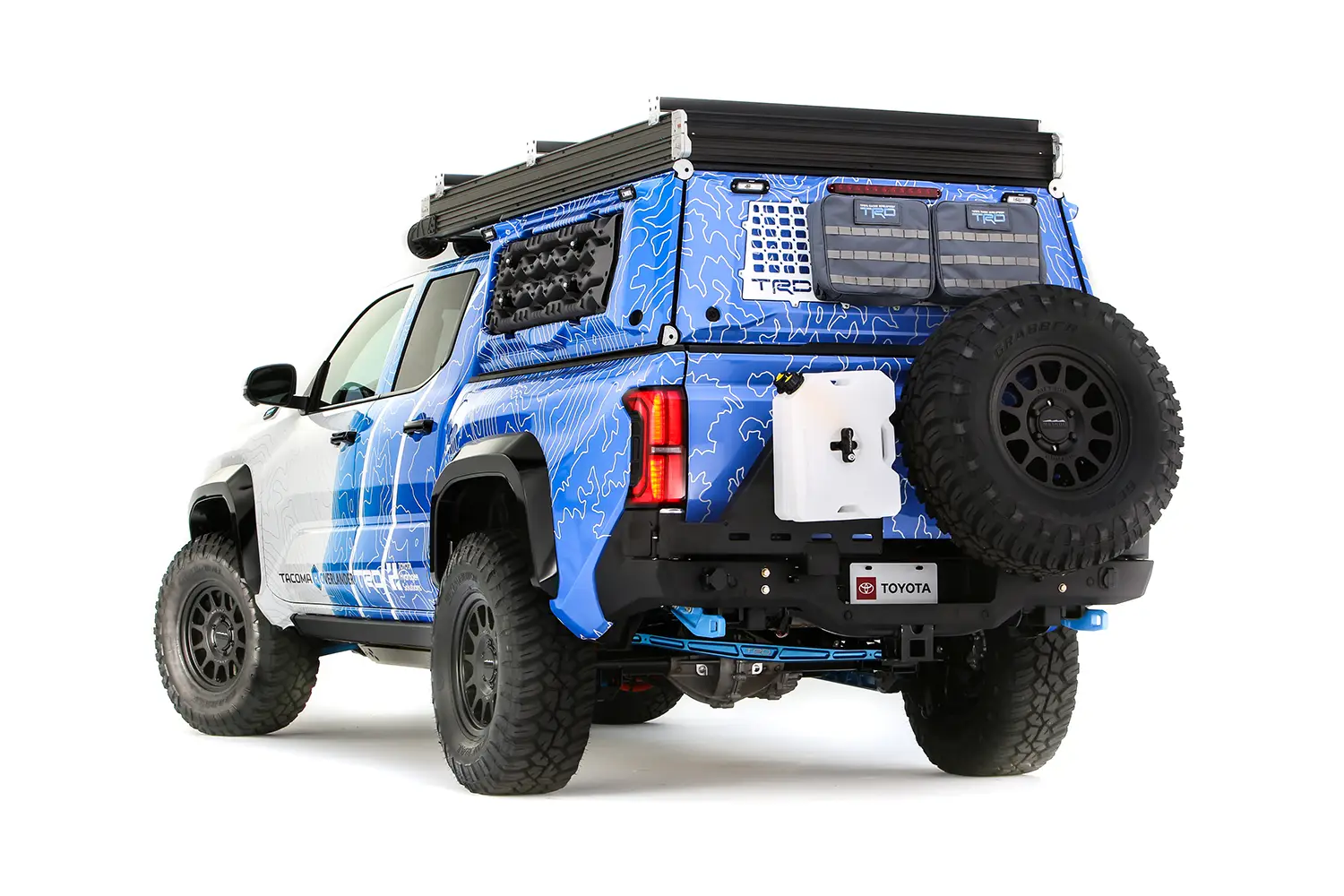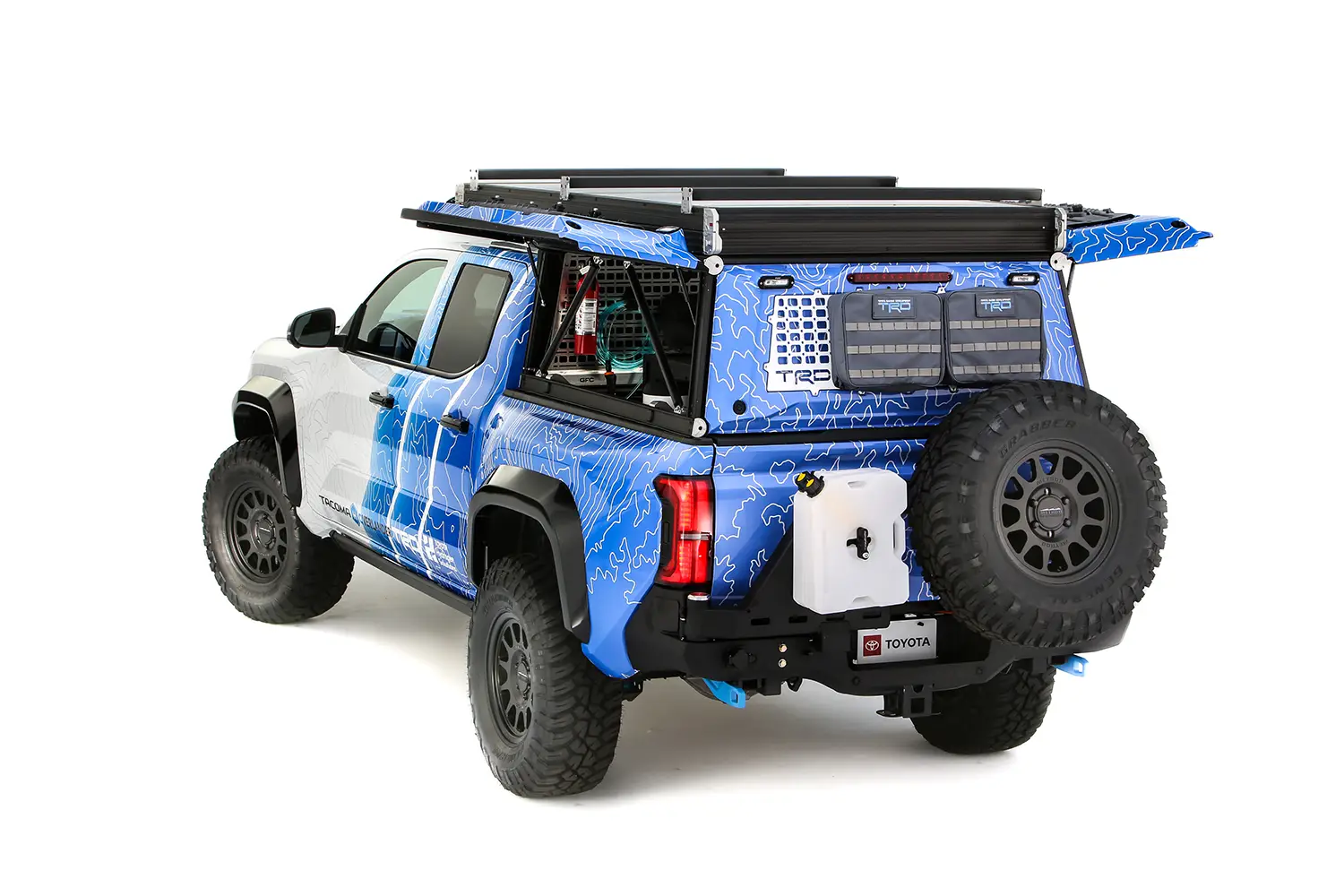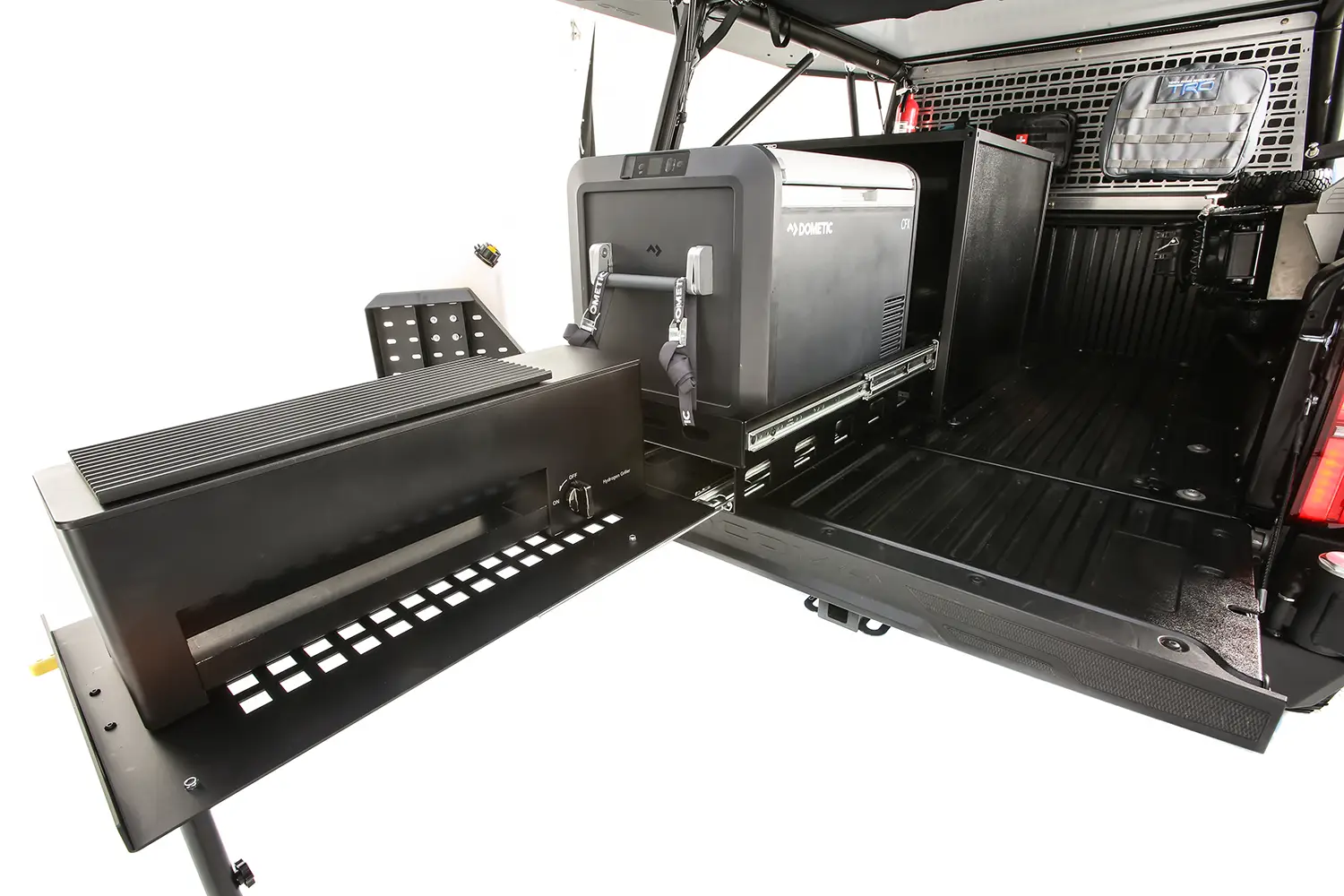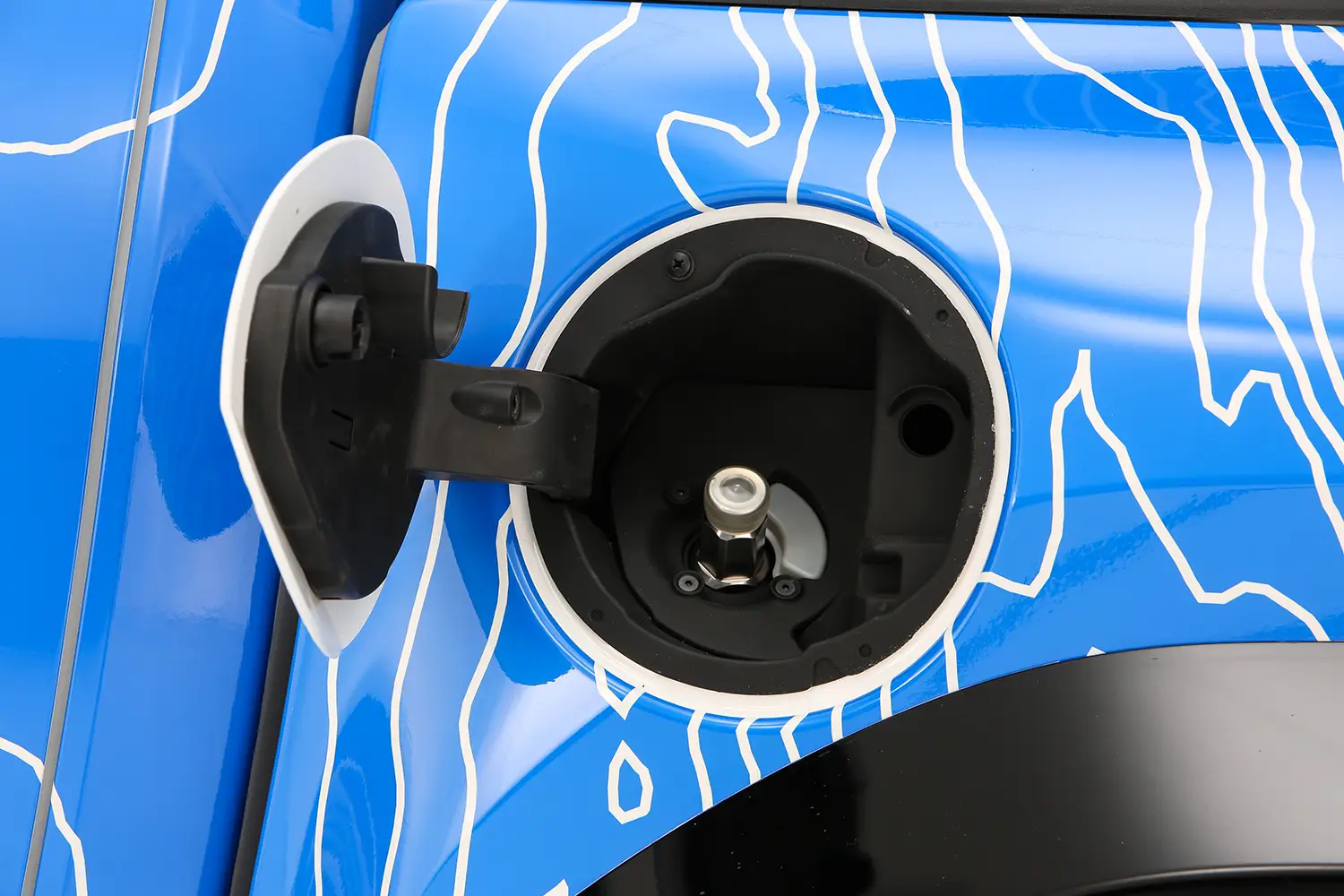
The Toyota Tacoma H2-Overlander Concept proves that clean energy and rugged performance can go hand in hand. This hydrogen-powered overlanding truck concept merges Toyota’s off-road heritage with futuristic fuel cell technology, showing a bold step toward sustainable adventure mobility.
Hydrogen Power Meets Overlanding Spirit
Developed by Toyota Racing Development (TRD) in California and North Carolina, the Toyota Tacoma H2-Overlander Concept showcases a hydrogen fuel cell electric (FCEV) and battery electric (BEV) powertrain that produces zero emissions, except for water. Built on the proven TNGA-F platform, the concept is designed for serious off-road exploration while minimizing environmental impact.

It’s not just self-sufficient, it’s a true team player. Thanks to a 15-kW power takeoff system, the Tacoma H2-Overlander can power off-grid homes or charge two electric vehicles simultaneously using dual NEMA 14-50 outlets. This makes it a valuable companion for group expeditions deep into the wilderness.
Engineered by TRD for Performance and Innovation
TRD engineers replaced the traditional gasoline powertrain with a second-generation Toyota Mirai fuel cell stack and three hydrogen tanks holding six kilograms of hydrogen. The setup powers two electric motors, one front and one rear, delivering a combined 547 horsepower. A 24.9-kWh lithium-ion battery supports the system, offering the instant torque and regenerative benefits typical of electric vehicles, combined with the quick refueling advantages of hydrogen.
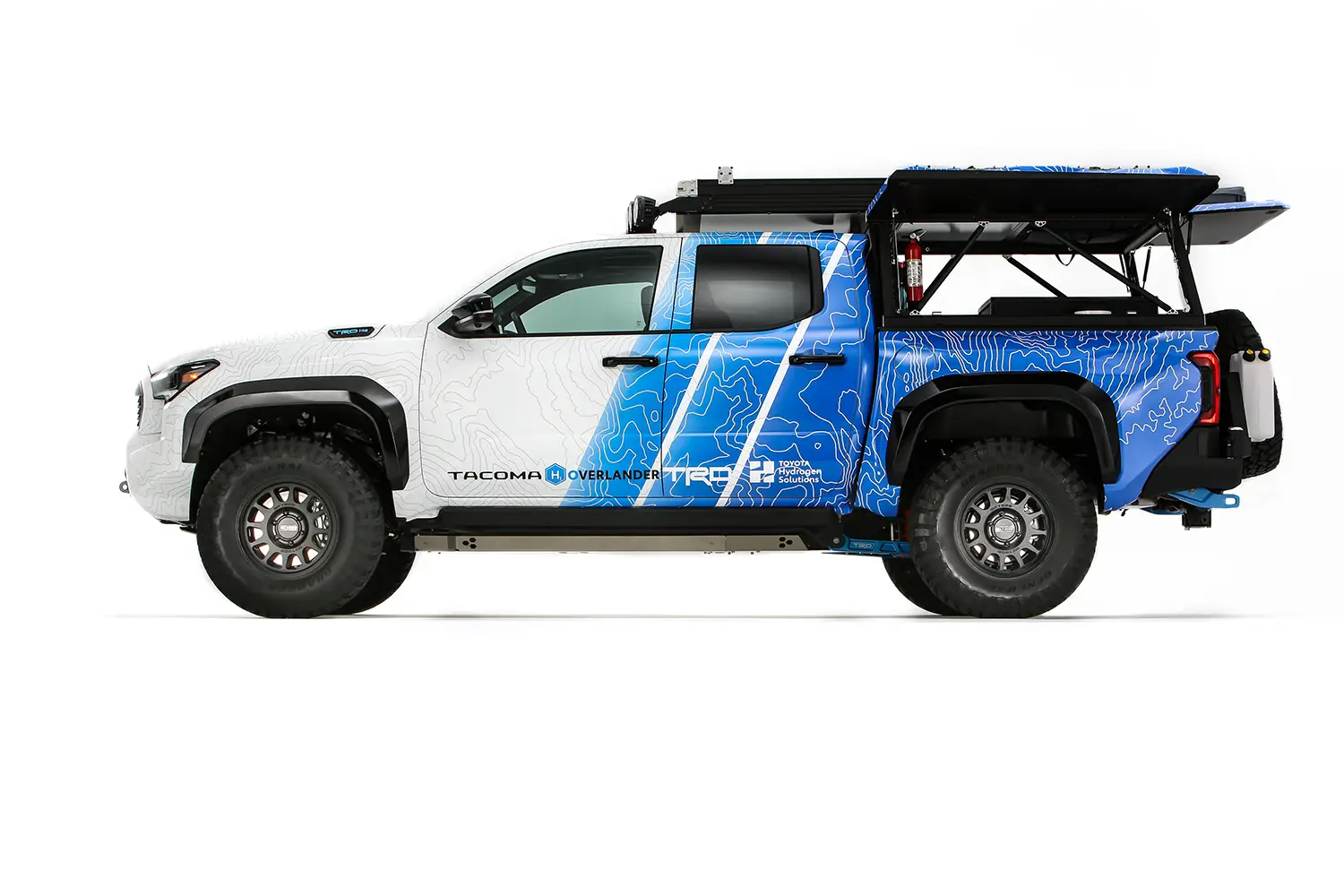
Torque is channeled through a front limited-slip differential and a rear electronic locking differential, ensuring strong traction and full-time four-wheel drive capability. The chassis features a TRD long-travel suspension with heavy-duty Fox 2.5 Performance Elite Series shocks and 35-inch off-road tires for serious trail work. Upgraded Tundra-spec brakes help rein in the power when descending steep slopes.
Off-Grid Utility and Smart Water Recovery
One of the Tacoma H2-Overlander Concept’s standout features is its patent-pending TRD exhaust water recovery system. It captures the water produced by the fuel cell stack, filters it, and stores it for practical use at camp, perfect for washing or showering in remote locations. Although not designed for drinking, this distilled water feature adds a new layer of utility for extended off-grid adventures.

Built Under Pressure, Literally
The concept’s development timeline was impressively short. TRD teams relied on advanced CAD modeling, 3D-printed guides, and cross-site collaboration to reengineer the Tacoma for hydrogen power in just a few months. Along the way, they introduced several innovations, including a roboformed tailgate and a recycled carbon-fiber overlanding camper shell.
Externally, the H2-Overlander looks ready for anything. It features heavy-duty bumpers, integrated recovery points, dual swingouts, a winch, and multiple lighting systems for both trail and camp use. Every detail emphasizes capability and sustainability.
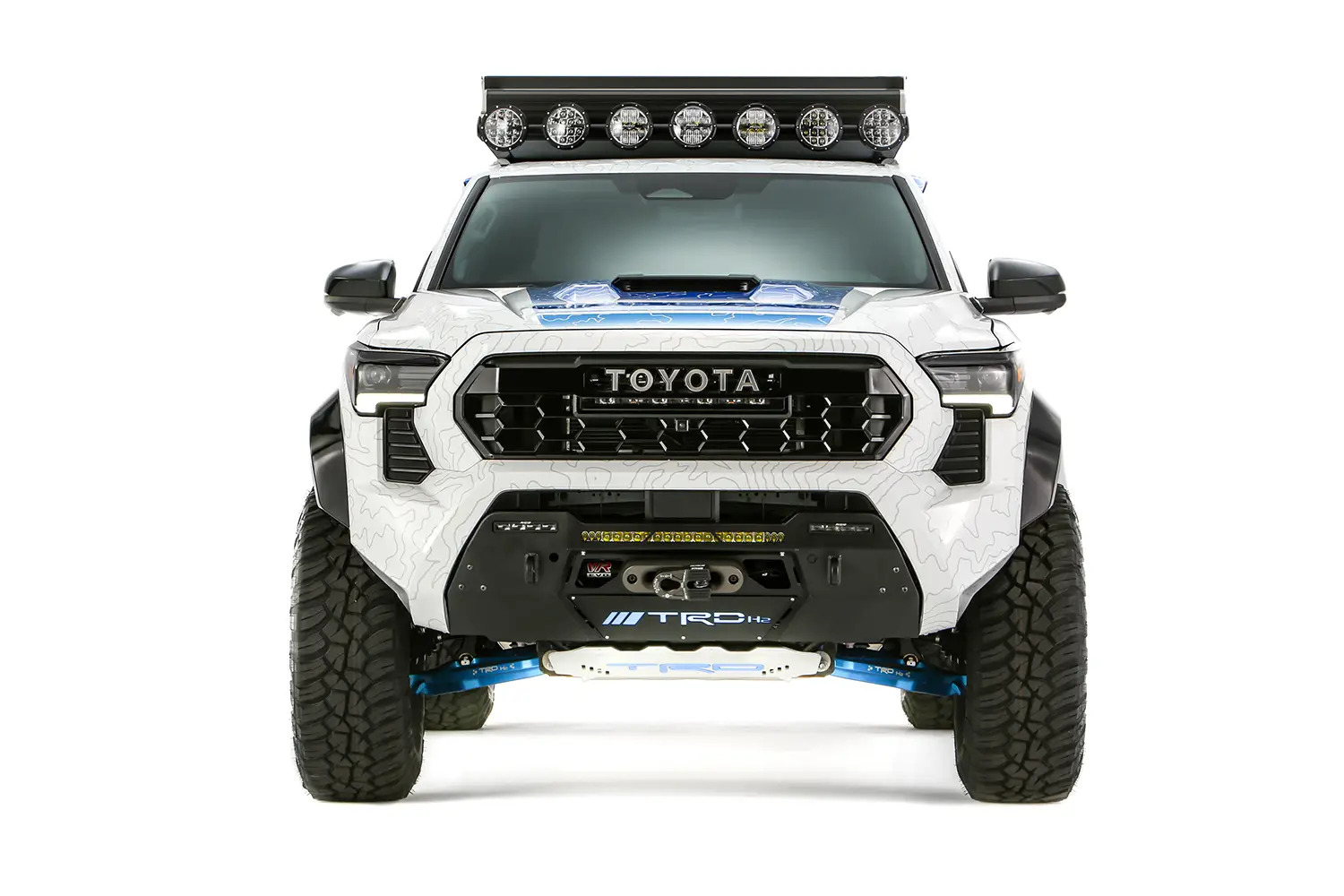
Power, Performance, and Purpose
With 547 horsepower, near-silent operation, and zero tailpipe emissions, the Toyota Tacoma H2-Overlander Concept redefines what an off-road truck can be. It’s fast, functional, and environmentally responsible, demonstrating how hydrogen and electric technologies can coexist for high-performance adventure vehicles.
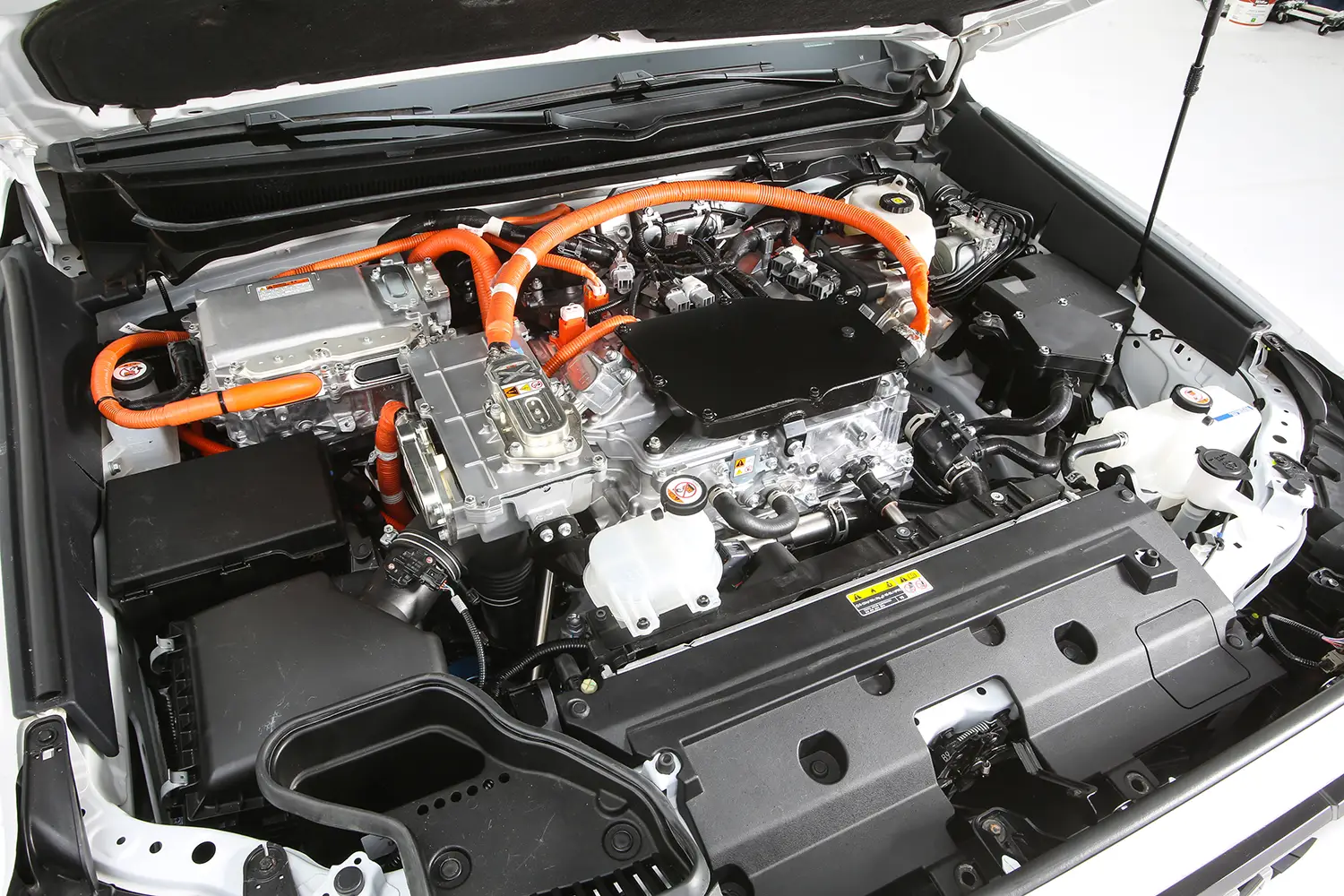
Summary
The Toyota Tacoma H2-Overlander Concept is more than a showpiece, it’s a vision of how clean energy can fuel exploration. Combining Toyota’s proven off-road DNA with hydrogen and electric innovation, this concept reflects the brand’s multi-pathway approach to carbon neutrality and a future where adventure leaves nothing but water behind.
Disclaimer: Content on this site is for informational purposes only. Vehicle specs, pricing, and availability may change. Always verify details with official sources before making decisions. Opinions are those of the authors.
Source: Toyota

